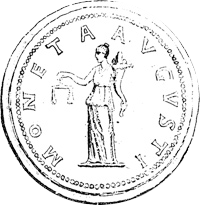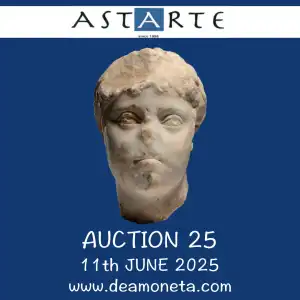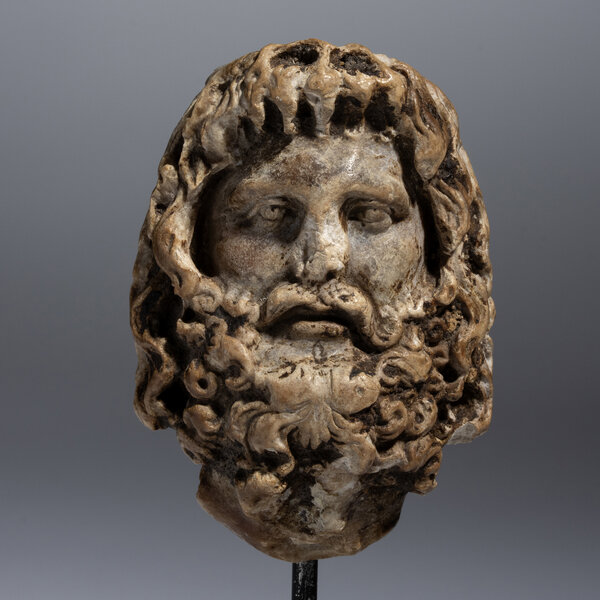
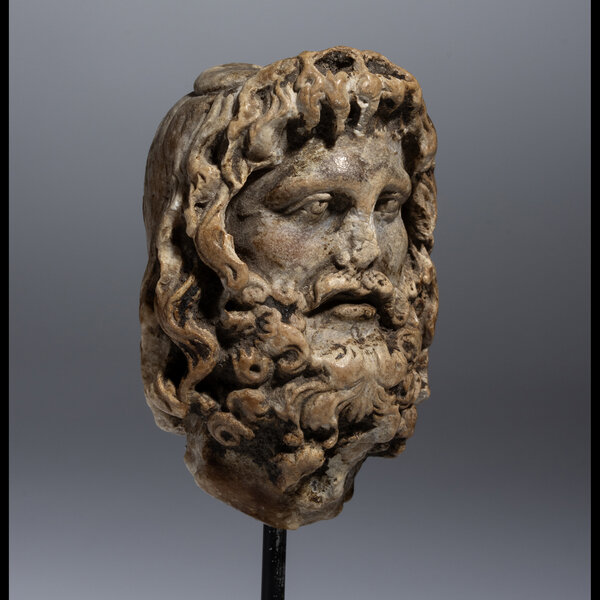


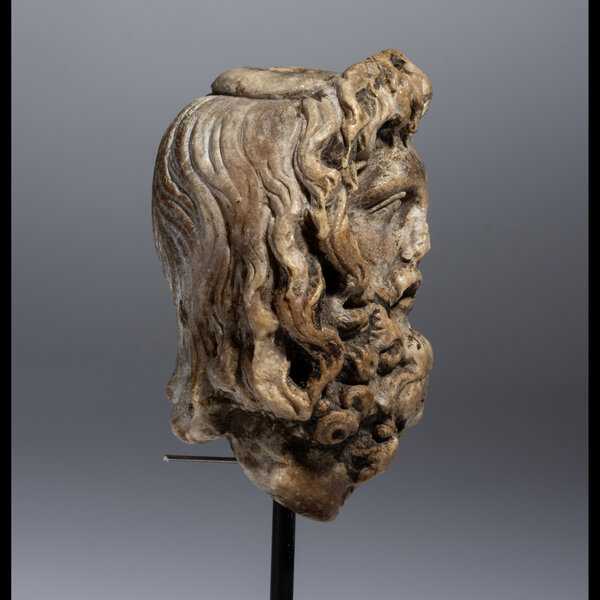
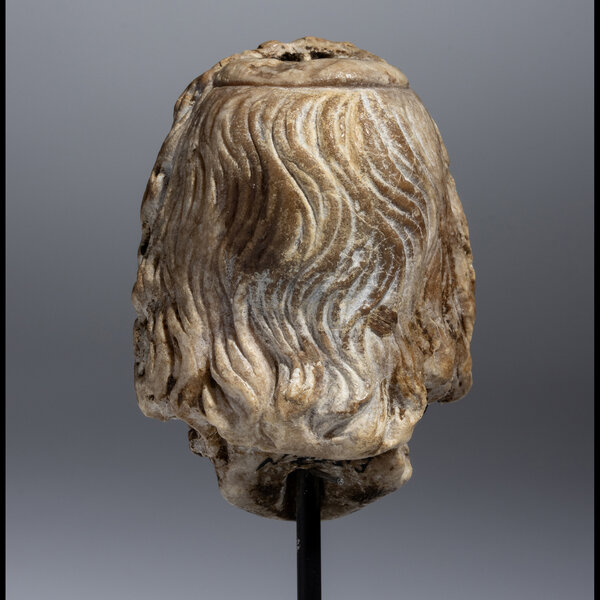
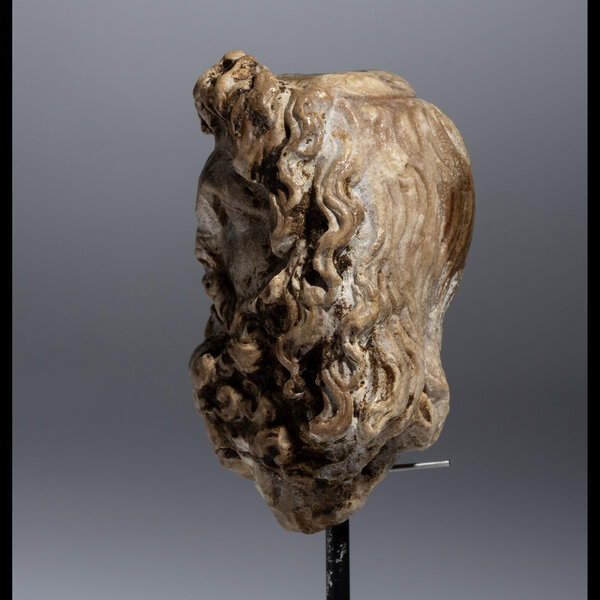
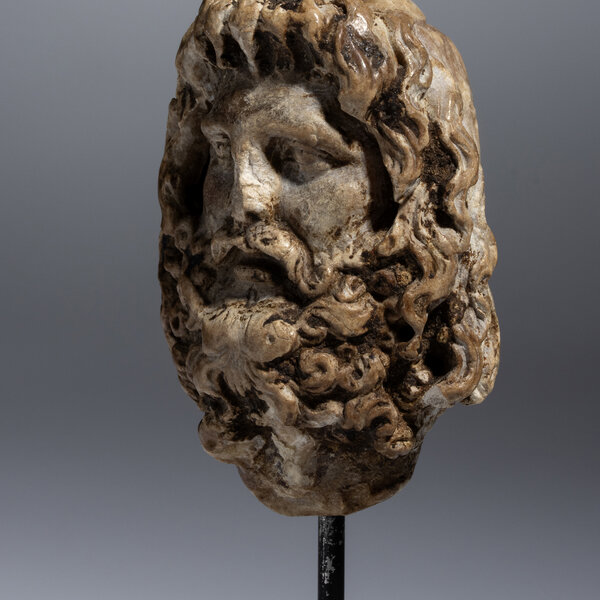
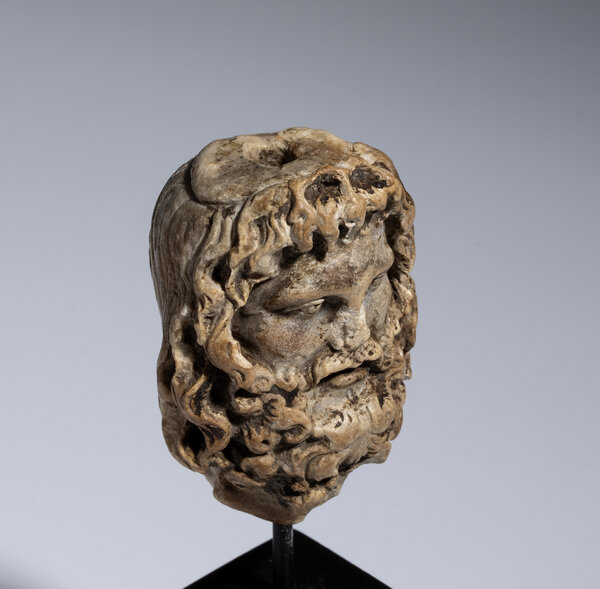


*AN EGYPTO-ROMAN MARBLE HEAD OF SERAPIS.
1st-2nd century A.D.
H. 6 cm
Provenance
Collection Maurice Nahman, Paris, Hôtel Drouot, 26-27 février 1953, lot 198
Succession Pierre Lévi (1907-2002)
Swiss collection, acquired 03/02/2007, Paris, Hôtel Drouot
Accompanied with the Art Loss Register, 10/03/2008
The original cult statue of Serapis was created by Bryaxis in Alexandria around 286–287 B.C., portraying the god with luxuriant curls, notably marked by three distinct locks falling vertically over the forehead (see A. Stewart, Greek Sculpture, p. 203). However, as B.S. Ridgway notes (Hellenistic Sculpture I, p. 95), the widespread diffusion of the Serapis cult throughout the Graeco-Roman world renders it "impossible, in the present state of our knowledge, to determine which cult image served as the prototype for the extant replicas." Although this particular rendering of Serapis is otherwise unattested, Ridgway observes (op. cit., p. 96) that representations featuring a fringe—such as in the present example—were “greatly preferred in Roman times.” The deity is chiefly recognized by his attributes, especially the modius (grain measure), which once likely surmounted the head; the flat surface at the top suggests the original presence of this emblem.
For Swiss buyers, VAT applies to the hammer price and buyer's premium (only for the lots with the * mention)
